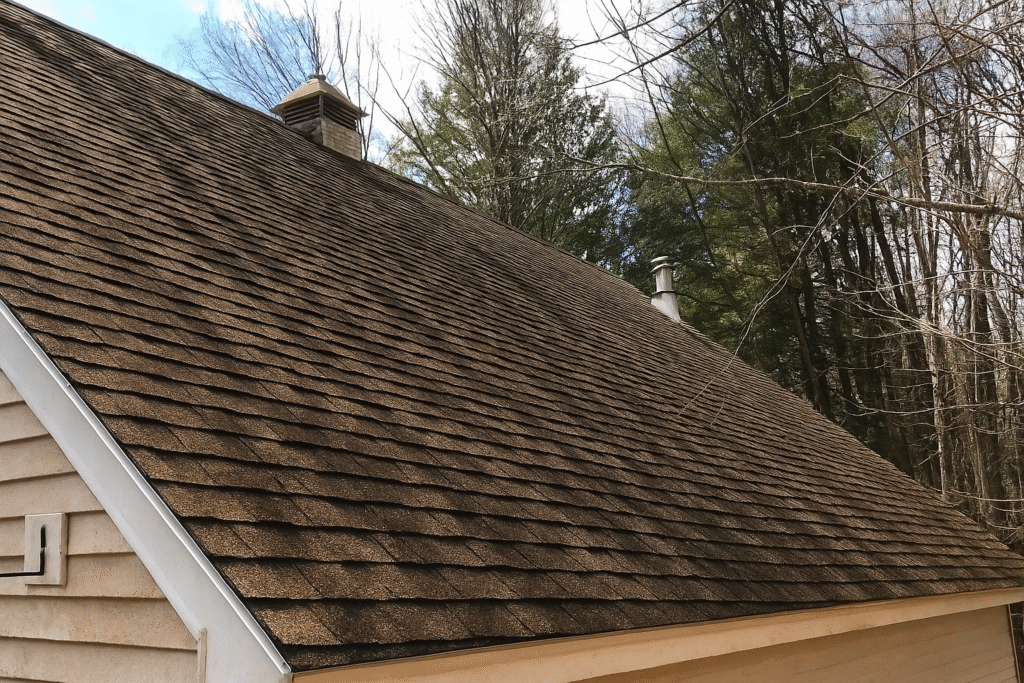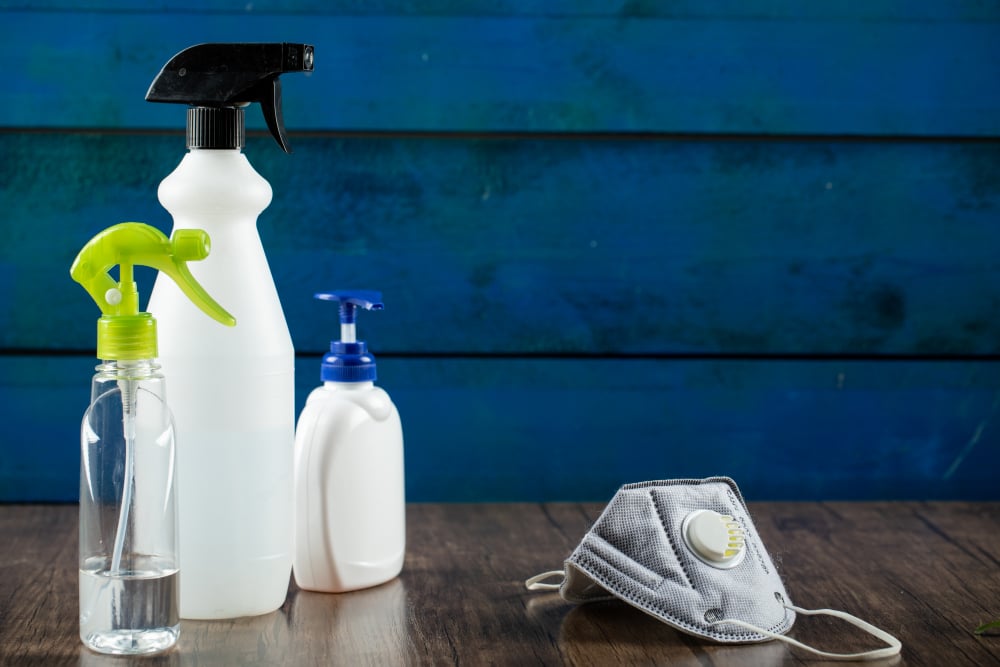The Truth About Roof Cleaning: A Complete Florida Homeowner’s Guide
Posted 9.26.2025 | 7 Minute Read

You’ve seen them on your neighbor’s roof, and maybe even your own—those dark streaks that make a home look older than it is. In South Florida’s humid climate, these unsightly stains seem almost inevitable.
The good news is that those streaks are not permanent. With the right approach, you can safely remove them, protect your roof, and improve your home’s curb appeal. This guide explains the safest cleaning methods, what causes the stains, and how proper maintenance can even save you money on energy and insurance bills.
What Are Those Black Streaks on My Florida Roof?
Those black streaks are not dirt or mildew. They are a living algae called Gloeocapsa magma, which thrives in South Florida’s heat and humidity. This organism feeds on the limestone filler in asphalt shingles, causing it to spread. The growth usually starts on the north-facing side of a roof, where moisture lingers longer, and then spreads across the rest of the roof via rainwater.
While it might seem like a cosmetic issue, this algae actually harms your roof. It feeds on the shingles, which reduces their ability to reflect heat by up to 50% and can drive up your cooling costs. Over time, this gradual breakdown shortens your roof’s lifespan and lowers your home’s value.
Key Insight: Those black streaks aren’t just ugly—they’re living algae feeding on your shingles. This growth traps heat, increasing your A/C costs and shortening your roof’s lifespan.
What Is the Safest Way to Clean a Roof?
When it comes to roof cleaning, the gold standard recommended by the Asphalt Roofing Manufacturers Association (ARMA) is soft washing. Unlike high-pressure washing that can strip away protective granules and damage shingles, soft washing uses low pressure—less than a garden hose—to apply a specialized cleaning solution. This method kills the algae and other organic growth at its root without risking damage to your roof.
A professional soft washing process begins by protecting the area around your home, including wetting down plants and covering sensitive landscaping. The cleaning solution is then applied from the bottom of the roof to the top and left to dwell for 15-30 minutes. This allows the solution to kill the organisms completely. Finally, the roof is gently rinsed with low-pressure water, washing away the dead algae and revealing a clean surface.
Pro Tip: Never use a high-pressure washer on an asphalt shingle roof. It can strip away the protective granules, cause permanent damage, and may even void your roof’s warranty. Always insist on soft washing.
What Chemicals Are Used for Roof Cleaning?

The most effective and widely used chemical for killing Gloeocapsa magma is sodium hypochlorite, the same active ingredient found in household bleach and pool chlorine. Professionals use a carefully mixed solution that is strong enough to be effective but safe for your roofing materials. When applied correctly, it kills the algae within 20 minutes.
For homeowners seeking a greener approach, alternatives like hydrogen peroxide or oxygen bleach-based cleaners are available. While these options are more environmentally friendly, they often cost more and may require more frequent applications to keep stains from returning. All of these chemicals, including eco-friendly ones, require careful handling and proper safety equipment to avoid damaging plants or causing injury.
Are There Any Downsides to Roof Cleaning?
While professional roof cleaning offers many benefits, it’s important to understand the potential risks. Safety is the biggest concern, as working on a roof is inherently dangerous. Industry data shows that the vast majority of roofing accidents happen during DIY attempts due to falls, chemical exposure, or electrical hazards.
Safety First: Working on a wet, sloped roof is extremely dangerous. Given that most roofing accidents happen during DIY projects, hiring an insured professional is the safest choice for you and your home.
Beyond safety, you should also consider the cost. Professional services provide value through expertise and safety, but it is an investment. Finally, remember that in Florida’s climate, roof cleaning is a recurring maintenance task, not a one-time fix. Most homes will need cleaning every two to three years to keep algae at bay.
Can a Clean Roof Lower My Homeowners Insurance?
Many Florida homeowners are surprised to learn that a well-maintained roof can directly impact their insurance. Carriers often offer discounts of 15-35% for homes with roofs in excellent condition, and some may even require proof of maintenance for policy renewal.
Furthermore, having professional cleaning records with before-and-after photos can streamline the claims process after a storm. This proactive maintenance is especially important for roofs over 15 years old, as it demonstrates you are a responsible homeowner. A clean, well-maintained roof may also help you qualify for valuable hurricane mitigation discounts.
Did You Know? A clean, well-documented roof can qualify you for significant homeowners insurance discounts. Ask your provider if they offer savings for proactive roof maintenance.
When Is the Best Time to Clean My Roof in Florida?
Timing your roof cleaning correctly ensures safety and effectiveness. The best time for this project is during Florida’s drier, cooler months, from late fall through early spring. This allows you to avoid the dangerous summer heat and unpredictable storms of hurricane season.
As a general rule, inland homes often need cleaning every 2-3 years, while coastal or heavily shaded properties may require it annually due to higher humidity and salt air. It’s also wise to schedule an inspection and cleaning after a major storm to wash away salt residue and check for hidden damage.
Should I Hire a Professional or DIY My Roof Cleaning?
Deciding between hiring a pro and doing it yourself comes down to safety, complexity, and equipment. Hiring a professional is the safest choice for two-story homes, steep roofs, or delicate materials like clay tile. Professionals bring specialized equipment, proper insurance, and safety training, ensuring the job is done right without voiding your roof’s warranty.
A DIY approach might seem tempting for a single-story home with a gentle slope, but it still requires the right safety gear, chemical knowledge, and equipment. Given the significant risks, most homeowners find that the peace of mind and guaranteed results from a professional service are well worth the investment.
Does the Cleaning Method Change for Different Roof Types?
Yes, the right cleaning method depends on your roofing material. Using the wrong approach can cause irreversible damage.
| Roof Material | Recommended Cleaning Method | Key Consideration |
| Asphalt Shingles | Soft Washing | Absolutely no high pressure. This prevents stripping the protective granules that give the shingles their color and UV protection. |
| Clay & Concrete Tiles | Gentle Soft Washing | A careful, low-pressure technique is needed to avoid cracking brittle tiles or damaging the surface glaze. |
| Metal Roofs | Soft Washing | Professionals must use the correct chemical concentration to prevent corrosion or discoloration of the metal’s finish. |
| Slate or Wood | Specialized Professional Cleaning | These premium materials are extremely delicate and should only be cleaned by experts with specific experience in handling them. |
When Is Cleaning Not Enough?
Sometimes, a roof cleaning reveals deeper issues that need a roofer’s attention. Call a professional roofing contractor if you notice red flags like missing or cracked shingles, significant granule loss creating “bald” spots, soft or sagging areas on the roof deck, or visible rust on metal components. These signs indicate your roof may need repair or replacement, and a cleaning alone won’t solve the underlying problem.
Your Next Steps for a Healthier Roof
Regular roof cleaning is a smart, cost-effective way to protect your South Florida home. If your roof already has streaks or you’re preparing for an insurance renewal, now is the perfect time to act. Proactive maintenance is always easier and less expensive than dealing with a major problem down the road.
Ready to protect your investment? Contact Coastal Roofing of South Florida for a free, no-obligation roof inspection and cleaning consultation. Our experienced team understands Florida’s climate and will help you make an informed decision that protects both your home and your wallet.
Recent Articles
